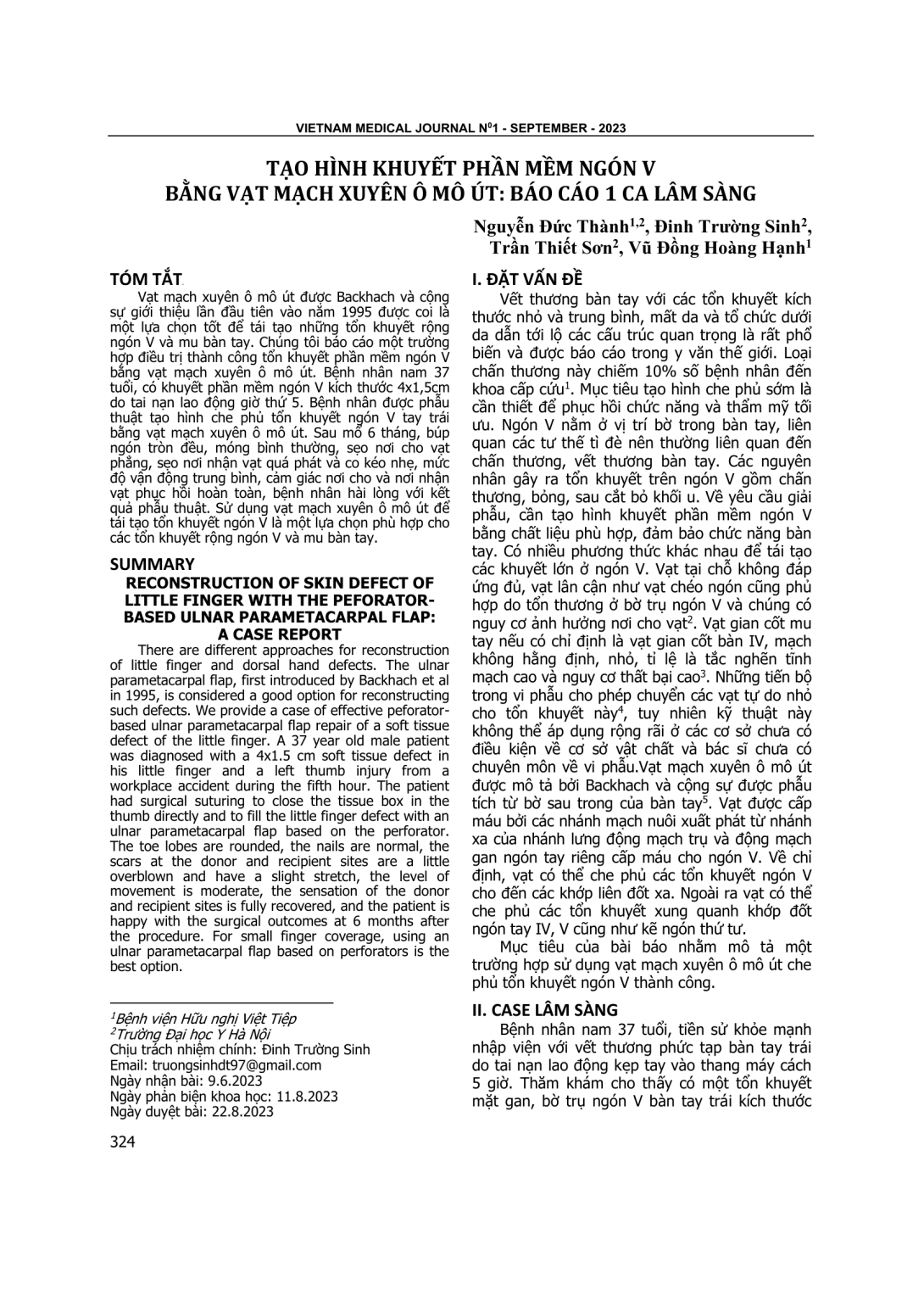
Vạt mạch xuyên ô mô út được Backhach và cộng sự giới thiệu lần đầu tiên vào năm 1995 được coi là một lựa chọn tốt để tái tạo những tổn khuyết rộng ngón V và mu bàn tay. Chúng tôi báo cáo một trường hợp điều trị thành công tổn khuyết phần mềm ngón V bằng vạt mạch xuyên ô mô út. Bệnh nhân nam 37 tuổi, có khuyết phần mềm ngón V kích thước 4x1,5cm do tai nạn lao động giờ thứ 5. Bệnh nhân được phẫu thuật tạo hình che phủ tổn khuyết ngón V tay trái bằng vạt mạch xuyên ô mô út. Sau mổ 6 tháng, búp ngón tròn đều, móng bình thường, sẹo nơi cho vạt phẳng, sẹo nơi nhận vạt quá phát và co kéo nhẹ, mức độ vận động trung bình, cảm giác nơi cho và nơi nhận vạt phục hồi hoàn toàn, bệnh nhân hài lòng với kết quả phẫu thuật. Sử dụng vạt mạch xuyên ô mô út để tái tạo tổn khuyết ngón V là một lựa chọn phù hợp cho các tổn khuyết rộng ngón V và mu bàn tay.
There are different approaches for reconstruction of little finger and dorsal hand defects. The ulnar parametacarpal flap, first introduced by Backhach et al in 1995, is considered a good option for reconstructing such defects. We provide a case of effective peforator-based ulnar parametacarpal flap repair of a soft tissue defect of the little finger. A 37 year old male patient was diagnosed with a 4x1.5 cm soft tissue defect in his little finger and a left thumb injury from a workplace accident during the fifth hour. The patient had surgical suturing to close the tissue box in the thumb directly and to fill the little finger defect with an ulnar parametacarpal flap based on the perforator. The toe lobes are rounded, the nails are normal, the scars at the donor and recipient sites are a little overblown and have a slight stretch, the level of movement is moderate, the sensation of the donor and recipient sites is fully recovered, and the patient is happy with the surgical outcomes at 6 months after the procedure. For small finger coverage, using an ulnar parametacarpal flap based on perforators is the best option.
- Đăng nhập để gửi ý kiến
